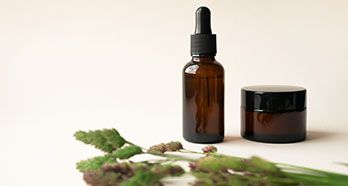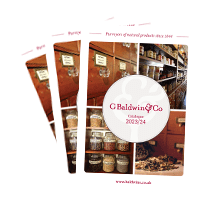How Essential Oils Are Made: Methods of Production
Essential oils are produced through various methods, each specifically chosen to extract the aromatic compounds from different plant materials. The three main methods of producing essential oils are steam distillation, expression, and absolute extraction. Let's explore each of these methods in detail.
Steam Distillation
In steam distillation, the raw plant material, which can include flowers, leaves, bark, roots, and seeds, is placed in a distillation apparatus positioned over water. The water is heated, producing steam that passes through the plant material. As the steam interacts with the plant cells, it breaks them down, releasing the volatile compounds present in the plant. The vaporised compounds are carried by the steam and directed through a coil to a cooling chamber. As the vapour cools, it condenses back into liquid form.
The liquid collected in the cooling chamber consists of two components: water used in the process and the essential oil itself. This mixture is known as a hydrosol or floral water. Some hydrosols, such as Rose water, Lavender water, and Orange blossom water, are sold separately as products. The yield of essential oil varies among plants, with some producing larger quantities per distillation process than others. Lavender, for example, typically yields around 4 litres of essential oil per tonne of plant material, while Roses have a much smaller yield.
Expression
The expression method involves pressing the oil out of the plant material. This technique is commonly used for extracting oils from citrus fruit peels, such as Lemon and Orange. By applying pressure, the essential oil is released from the oil glands present in the peel. Expression is a mechanical method that does not involve heat or solvents.
Absolute Extraction
Absolute extraction is a method employed when steam distillation is not suitable for extracting essential oils from certain plant materials. This is often the case when the material is adversely affected by steam. One example is Jasmine flowers. In absolute extraction, a solvent is used to extract the aromatic compounds from the plant material. The solvent dissolves the essential oil, creating an aromatic liquid. The solvent is then evaporated, leaving behind the concentrated essential oil.
The absolute extraction method is preferred for certain plants as it can preserve the true fragrance of the material more effectively than other methods.
These different methods of production allow for the extraction of essential oils from a wide variety of plants, each with its own unique characteristics and benefits. Whether through steam distillation, expression, or absolute extraction, essential oils capture the aromatic essence of plants and offer a range of applications and therapeutic properties.
 Looking for Qualified Advice on Herbs & Supplements?
Read our health guides, quick tips and popular posts on a range of health conditions, products & fitness
Looking for Qualified Advice on Herbs & Supplements?
Read our health guides, quick tips and popular posts on a range of health conditions, products & fitness
- Aromatherapy (19)
- Cold, Cough & Flu (13)
- Food & Supplements (39)
- Hair (17)
- Headaches & Stress Relief (18)
-
Health & Home (118)
- Allergies (4)
- Beauty (21)
- Blood & Circulation (11)
- Bone Strength & Dental (2)
- Breathing Conditions (3)
- Concentration & Focus (8)
- Digestion & Heartburn (8)
- Exhaustion & Fatigue (15)
- Homewares (3)
- Libido (3)
- Mens Health (22)
- Mother & Baby (1)
- Muscle & Joint Pain (9)
- Sleep Aids (10)
- Stress (3)
- Womens Health (24)
- Homeopathy (38)
- How To's & Guides (128)
- Product Information (30)
- Seasonal Remedies (34)
- Skin Care (35)
- Weight Loss (19)
- Events & Things To Do (7)
- 2024
- 2023
- 2021
- 2020
- 2019
- 2018
- 2017
- 2016
- 2015
- 2014
- 2013
- 2012
- 2011
- 2010
- 2008
- 2007
- 2004
- 2002
- 2001







 At number 64, our Walworth Road Shops are featured in Time out London’s
100 best shops and we couldn’t be more delighted!
At number 64, our Walworth Road Shops are featured in Time out London’s
100 best shops and we couldn’t be more delighted!

 View our Catalogue online.
It is stocked full of our latest oils, beauty products, health foods & gifts.
View our Catalogue online.
It is stocked full of our latest oils, beauty products, health foods & gifts.